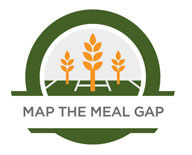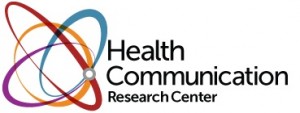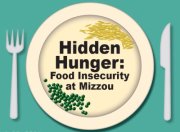
April 24, 2014
Growing Gardeners
Grow Well Missouri, a project of the Interdisciplinary Center for Food Security that partners with food pantries to offer food gardening resources to pantry clientele, recently released the evaluation results from their 2013 gardening program. Despite some tough growing conditions around mid Missouri, nearly 90% of respondents noted that their gardens ranged from “very productive” to “somewhat productive.” The evaluation also showed that participants are very inclined to share their garden’s bounty with others. Eighty-eight percent of respondents shared produce with family, friends, and neighbors. The complete Grow Well Missouri 2013 Gardening Program Evaluation Summary is available…

Nov. 20, 2013
New Report Reviews Healthy Food Access Research
Policy Link and The Food Trust recently released a joint report titled Access to Healthy Food and Why it Matters: A Review of the Research. Drawing on more than 300 studies published between 1990 and 2013, the report highlights the importance of improving access to healthy food for those living in low-income neighborhoods, communities of color, and rural areas. In addition to showing that better eating habits and decreased risk of diet-related diseases are associated with living closer to retail outlets that carry healthy foods, the report provides evidence for the positive economic impact of healthy food…

Sep. 30, 2013
Food Bank Conference Brings Allies Together
Looking for ways to engage food banks and anti-hunger allies in a meaningful dialogue about long-term solutions to hunger, the Community Food Bank of Southern Arizona hosted the inaugural Closing the Hunger Gap conference in Tucson in 2013. Sessions featured innovative organizations that incorporate nutrition education, community organizing, policy, economic development, and local food production into their work. Discussions centered on the root causes of hunger and tangible ways food banks can work together to address the most pressing issues and needs of their clients. The conference concluded with an action planning session to build momentum for ongoing…

Sep. 9, 2013
New Missouri Hunger Atlas Raises Awareness of Extent, Depth of Hunger in Missouri
The Missouri Hunger Atlas 2013, recently released by the Interdisciplinary Center for Food Security, provides a county-by-county assessment of the extent of food insecurity in the state. The Atlas also measures the work of a host of public and private programs intended to help people struggling with hunger. First issued in 2008, the Missouri Hunger Atlas is now in it’s third edition and features updated county tables and rankings, indicator maps, and trend analyses. A new feature of the 2013 edition is a Food Affordability measure. This measure estimates the percent of income required each week by households to…

July 23, 2013
Food Assistance and the Farm Bill Debate
Amidst the current Farm Bill debate, University of Arkansas Law professor Susan Schneider offers a reasoned assessment of who benefits from federal nutrition programs, the efficiency in which the programs are implemented, and the economic impact of spending food stamp dollars in local communities. The article is featured in the Agricultural Law Blog, the official blog of the Association of American Law Schools section on agricultural and food law.

July 12, 2013
New Study Documents Extent of Hunger in U.S. Counties and Congressional Districts
Feeding America recently released Map the Meal Gap 2013 which provides estimates of food insecurity for every county and congressional district in the United States. The report also provides data and analysis on the percentage of the food insecure population that likely qualify for SNAP (i.e. food stamps) and other federal food assistance programs, along with the percentage of those who do not qualify for federal programs. Information on the average cost per meal in each county is also provided. An interactive map is included with the report along with a variety of additional resources.

May 30, 2013
USDA Report: Disability a Risk Factor for Food Insecurity
A recent issue of Amber Waves, from the USDA Economic Research Service, reports on a new study showing that disability is one of the strongest factors affecting a household’s food security status. The report states that in 2009-2010 “one-third of households with a working-age adult who was unable to work due to disability were food insecure,” compared to “12 percent of households that had no working-age adults with disabilities.” Food insecurity is often more severe in households that include adults with disabilities. The full report, Food Insecurity Among Households with Working-Age Adults with Disabilities, is available online.

May 23, 2013
Summer Field Research Begins
The start of summer 2013 marks the third year in which Interdisciplinary Center for Food Security faculty and staff have gone to the field to hear the voices of people using food pantries in central and northeast Missouri. This large research project will gather data from approximately 1200 food pantry clients in 32 counties through in-depth personal interviews. The data will be used to look at a variety of challenges faced by households. The ultimate goals are to help people lead healthy and productive lives and give policy makers, agency professionals, and service providers information to develop and deliver solutions…

April 29, 2013
Can $4 a day provide a nutritious diet?
That is the question posed by the Health Communication Research Center, a partner of the Interdisciplinary Center for Food Security, as their staff embarked on the Food Stamp Challenge in March. Limiting food expenditures to $28 dollars per week (the average SNAP benefit for a person in Missouri), they set out to learn about the challenges of eating healthy on a food stamp budget and shared their experiences on the their blog. The challenge coincides with National Nutrition Month and the release of the documentary, A Place at the Table. The Health Communication Research Center at the…

April 11, 2013
Hidden Hunger at Mizzou
Hunger on college campuses is often overlooked, but with increasing costs for tuition and housing, students often find themselves pinched. Students at the University of Missouri recently organized an event to bring the issue to light. Co-hosted by the Women’s Center, Tiger Pantry (MU’s campus-based food pantry), and the Environmental Leadership Office, Hidden Hunger included a panel of MU students who shared their personal stories about dealing with food insecurity. Ashley Vancil, a graduate student with the Interdisciplinary Center for Food Security, moderated the panel. More information about the forum can be found at the Maneater and…